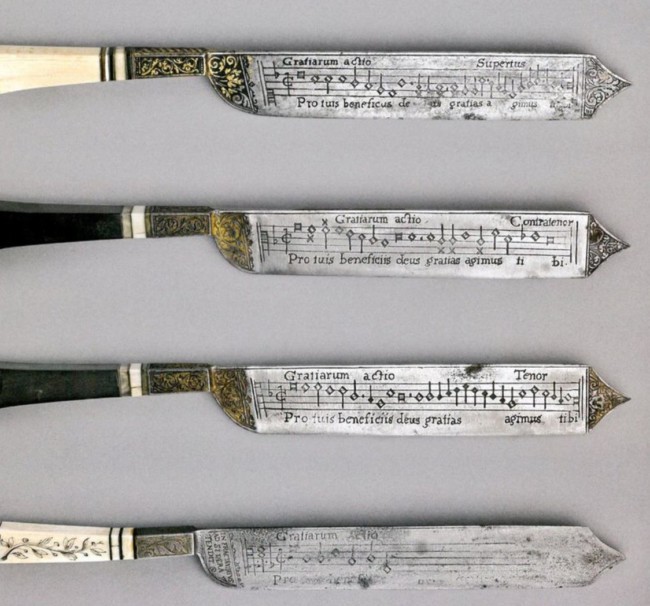Musical Knives from the Renaissance

If you didn’t know the tune at a Renaissance dinner party sing-along, you could read the lyrics and music score etched on your fish knife. Maya Corry, of the Fitzwilliam Museum in Cambridge, says these musical knives (notation knives) offer “insight into that harmonious, audible aspect of family devotions”. That’s the kind of well-educated guess future generations with access to digital files won’t have to make when they eye a post-prandial karaoke machine. “The sharp, wide steel would have been ideal for cutting and serving meat,” writes Eliza Grace Martin at WQXR, “and the accentuated tip would have made for a perfect skewer.” Knives for cutting and stabbing..? Well, if you say so.
As Josh Jones notes, Kristen Kalber, curator at the Victoria and Albert Museum, says “diners in very grand feasts didn’t cut their own meat.” That right? No, “we are not entirely sure” what the knives were used for, she adds.
But we do know that each knife had a different piece of music on each side, and that a set of them together contained different harmony parts in order to turn a roomful of diners into a chorus. One set of blades had the grace on one side, with the inscription, “the blessing of the table. May the three-in-one bless that which we are about to eat.” The other side holds the benediction, to be sung after the dinner: “The saying of grace. We give thanks to you God for your generosity.”
Chopsticks wasn’t written until the late 19th Century, and spoons didn’t get going until the 1950s. But pass the tuning fork, and we’ll sing for our supper.
Spotter: Open Culture, WQXR/@tedgioia
Posted: 6th, April 2021 | In: Music, Strange But True Comment | TrackBack | Permalink


